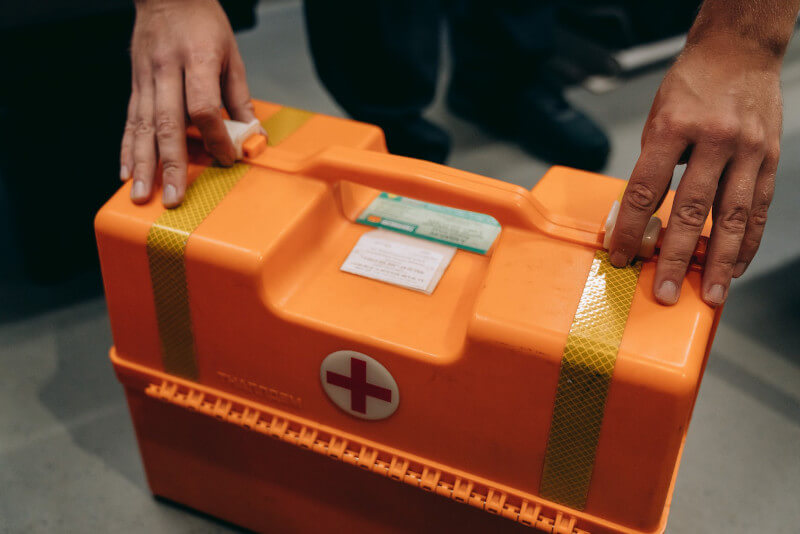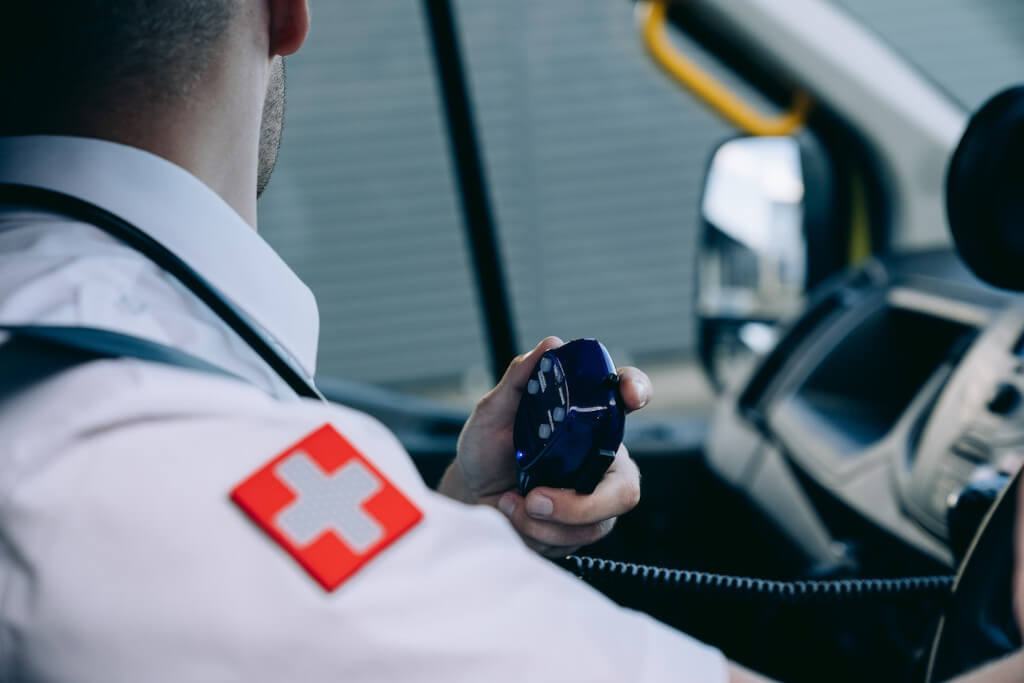In the event of an accident or medical emergency, the first thing someone should do is call for aid.
Common Injuries: How to Treat Them with First Aid (Cuts, Burns, and Broken Bones)
Knowledge of fundamental first aid is essential for treating small injuries like cuts, scratches, and burns at home. Put pressure on the area and wash the cut with soap and water to cease the bleeding. Apply a bandage or sterile dressing to the wound, and if necessary, seek medical attention. Keep the wounded region immobile until medical assistance arrives if the fracture or broken bone cannot be splinted or placed in place right away.
When CPR is Done?

Everyone should be taught the basics of cardiopulmonary resuscitation (CPR) because of its potential to save lives in the case of a cardiac arrest.
Identifying and Treating a Stroke or Heart Attack
Calling for aid and getting medical attention quickly is of utmost importance in the event of a stroke or heart attack. Keep an eye out for symptoms like chest pain (a sign of a heart attack) or abrupt weakness/numbness on a particular side of the body (a sign of a stroke) as you wait for help to arrive.
Stopping Hemorrhages and Applying Tourniquets
If severe bleeding is not stopped soon, it can be fatal. Put firm pressure on the wound and think about applying a tourniquet if the bleeding doesn’t stop. Learn how to tie a tourniquet correctly and don’t squeeze too hard!
How to Treat Choking and Use the Heimlich Maneuver
Another common yet potentially dangerous medical emergency is choking. Do the Heimlich maneuver, often known as 5 abdominal thrusts, on an individual who seems to be choking. If that doesn’t work, get treatment right away.
How to Spot and Treat a Concussion
Since head injuries may vary from minor to serious, it’s important to treat them as soon as possible. If the patient is aware, you should check for signs of disorientation or confusion. If you suspect a head injury, the injured party should be kept calm and emergency help should be called immediately. Here are some red flags to keep an eye out for:
- Headache
- Dizziness
- Nausea
- Disorientation or a lapse of consciousness
- Weakness or sleepiness
- hazy vision
- hypersensitivity to sound or light
- Having trouble remembering things or focusing
- Mood swings and agitation
- Verbal slurs
- Disruption of equilibrium or coordination
- Discharge of a colourless liquid, such as blood, from the nostrils or ears
- Head bruising or swelling
- An alteration in the size or shape of the skull
- Caused by a blow to the head, a cut, or a bruise
- A strong headache with progressive worsening
- A shift in personality or state of mind, as in becoming agitated or unresponsive.
It’s also worth noting that not every head injury is readily apparent; in fact, a person who has had a brain injury can not exhibit symptoms for several hours or days after the incident. Here are some things you can do while waiting for assistance to arrive if you think someone has suffered a brain injury:
- Don’t move the patient unless necessary, and make sure they’re as comfortable as possible while they’re lying there. If at all feasible, try to keep the patient awake and alert.
Keep an Eye on Serious Readings
- Assess the patient’s respiration, heart rate, and alertness: Call an emergency service instantly if the individual in question stops breathing or responding.
- First aid measures include applying direct pressure to a bleeding wound: The swelling can be reduced by using ice on a bump or bruise to the head.
- Warm the person up: Protect them from the cold by wrapping them in a blanket or jacket.
- Keep a close eye on the patient and make note of any shifts in their symptoms: Don’t forget to write down the moment the injury happened and the first aid that was given.
Making a Disaster Supply Kit with First Aid Instructions

You should always have a well-stocked first aid kit handy in your home or vehicle. Bandages, antiseptic wipes, tweezers, scissors, adhesive bandages, and gauze pads are essential components of any first aid kit. You should also make a family emergency plan so that everyone knows what to do in the event of a disaster.
Heat Exhaustion and Heat Stroke, Snake Bites, Insect Stings
If bitten or stung by a snake or insect, it’s best to be cool and get medical help right once. Heat-related emergencies, such as extreme heat exhaustion or heat stroke, require immediate relocation to a cool area, liberal administration of water, and, if necessary, medical assistance.
Pregnancy and Delivery Emergencies
Expectant mothers should know what to do in the event of a medical emergency. It’s important to be familiar with the location of a nearby hospital in case of an unexpected complication during labour. Learn the early indications of labour that could indicate you need to get to the hospital right away.
Manage Allergy Attacks
The severity of an allergic reaction varies widely. Give epinephrine (if accessible) and get medical assistance right once an allergic response occurs. Learn the symptoms of anaphylaxis so you can identify a life-threatening allergic reaction:
- Puffiness in the mouth, face, and/or throat
- Itchy, red, and swollen skin
- Sensations of itching or tingling on the skin
- Difficulty or shortness of breathing
- Hoarseness or wheezing
- Experiencing palpitations or a racing heart
- Fainting or dizziness
- Diarrhea and/or vomiting
- Diarrhoea
- Pain in the stomach
- Abdominal discomfort
- Absence of Reason
Keep the Person Calm and Comfortable as You Wait for Aid to Arrive

If at all feasible, get the person to lie down and stay still while you do so. If they are lightheaded or dizzy, have them prop their feet up on a pair of pillows.
- Let out your shirt and trousers: To improve breathing, loosen any collars, ties, or belts the patient may be wearing.
- Keep an eye on serious readings: Assess the patient’s respiration, heart rate, and alertness. CPR must be started quickly if the victim stops breathing or is unresponsive.
Always Have a Plan
Everyone should always have a plan in place and the knowledge to implement it in the event of an unexpected crisis. In the event of an emergency, knowing basic first aid could be the distinction between dying and living. Keep yourself well-versed in the fundamentals of first aid to ensure you can react appropriately in an emergency. In South Africa, you can get first aid training from a wide variety of sources.

